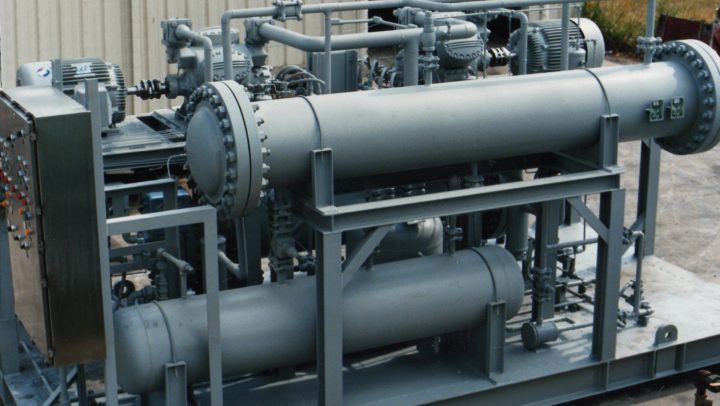
How Ammonia Refrigeration Have Evolved Through The Years?
Something like Ammonia Refrigeration has come a long way and managed to evolve a lot. And that’s exactly what we are going to address in this post.
Ammonia (NH3) was first isolated back in 1761 by Joseph Priestly. Though both ammonia and carbon dioxide were known as refrigerants, it took humanity almost 73 years to develop a workable compression refrigeration cycle.
Ammonia has always been a natural refrigerant, and it took us 73 years to search for a way to harness this agent. However, things took a turn in 1859; because that’s the time the world came across a way to harness in the best possible way. That’s also the year when a brilliant mind built the first-ever ammonia absorption system.
It took only a year for us to come with perfect refrigeration solutions. Ammonia played a crucial role in those solutions as it was made purely out of waste material. Therefore, Ammonia was a perfect fit for refrigeration and managed to become a vital aspect in the meat/slaughtering industry.
The year was 1920 when things went “south.” We came across the development of CFCs (Chlorofluorocarbons), which is still being used quite extensively in today’s world. What we know about CFCs now wasn’t even considered back then. In fact, these gases were considered to be completely harmless and stable. They were promoted as safety refrigerants, which resulted in an accelerated demand and an overbearing success. Sep-Pro Systems is one of the major manufacturers of ammonia refrigeration solutions and has maintained a great market presence.
Due to the popularity of CFC’s Ammonia came under big pressure, but it somehow managed to be a priority for major industrial installations and food preservation on a large scale. Besides that, technologies like Gas Separators have also seen a major breakthrough.
In the 1980s, the harmful effects of CFC refrigeration were recorded in the books, and later, it was found that CFC is the main culprit behind the ozone layer depletion and global warming.
Ammonia, on the other hand, has no known hazardous effects. It is in fact, proven to have a handful of benefits, which we took the liberty to enlist down below:
Ammonia is proven to be one of the most environment-friendly refrigerants out there. According to various studies, it was found that Ammonia belongs to a group of so-called “natural” refrigerants. Besides that, it has GWP (Global Warming Potential) and ODP (Ozone Depletion Potential) equal to zero.
Ammonia-powered solutions are safe and sustainable, especially when it comes down to energy consumption. So, if you have been using CFC refrigeration all this time in your business, this might be the right time to switch things up a bit by simply choosing an ammonia refrigeration solution.
For those who don’t know, Ammonia is a toxic refrigerant and is also flammable. That’s why it is recommended to handle that with care. When necessary, you can incorporate the combination of Ammonia and CO2 could be an efficient option.
In the End
Now that you know everything about Ammonia Refrigeration and looking for a perfect solution, consider checking us out at Sep-Pro Systems.
Ammonia (NH3) was first isolated back in 1761 by Joseph Priestly. Though both ammonia and carbon dioxide were known as refrigerants, it took humanity almost 73 years to develop a workable compression refrigeration cycle.
The History
Ammonia has always been a natural refrigerant, and it took us 73 years to search for a way to harness this agent. However, things took a turn in 1859; because that’s the time the world came across a way to harness in the best possible way. That’s also the year when a brilliant mind built the first-ever ammonia absorption system.
It took only a year for us to come with perfect refrigeration solutions. Ammonia played a crucial role in those solutions as it was made purely out of waste material. Therefore, Ammonia was a perfect fit for refrigeration and managed to become a vital aspect in the meat/slaughtering industry.
The Excruciating Benefits of Ammonia Refrigeration
The year was 1920 when things went “south.” We came across the development of CFCs (Chlorofluorocarbons), which is still being used quite extensively in today’s world. What we know about CFCs now wasn’t even considered back then. In fact, these gases were considered to be completely harmless and stable. They were promoted as safety refrigerants, which resulted in an accelerated demand and an overbearing success. Sep-Pro Systems is one of the major manufacturers of ammonia refrigeration solutions and has maintained a great market presence.
Due to the popularity of CFC’s Ammonia came under big pressure, but it somehow managed to be a priority for major industrial installations and food preservation on a large scale. Besides that, technologies like Gas Separators have also seen a major breakthrough.
In the 1980s, the harmful effects of CFC refrigeration were recorded in the books, and later, it was found that CFC is the main culprit behind the ozone layer depletion and global warming.
Ammonia, on the other hand, has no known hazardous effects. It is in fact, proven to have a handful of benefits, which we took the liberty to enlist down below:
- Environment safe
Ammonia is proven to be one of the most environment-friendly refrigerants out there. According to various studies, it was found that Ammonia belongs to a group of so-called “natural” refrigerants. Besides that, it has GWP (Global Warming Potential) and ODP (Ozone Depletion Potential) equal to zero.
- Energy efficient
Ammonia-powered solutions are safe and sustainable, especially when it comes down to energy consumption. So, if you have been using CFC refrigeration all this time in your business, this might be the right time to switch things up a bit by simply choosing an ammonia refrigeration solution.
- Safe
For those who don’t know, Ammonia is a toxic refrigerant and is also flammable. That’s why it is recommended to handle that with care. When necessary, you can incorporate the combination of Ammonia and CO2 could be an efficient option.
In the End
Now that you know everything about Ammonia Refrigeration and looking for a perfect solution, consider checking us out at Sep-Pro Systems.
0
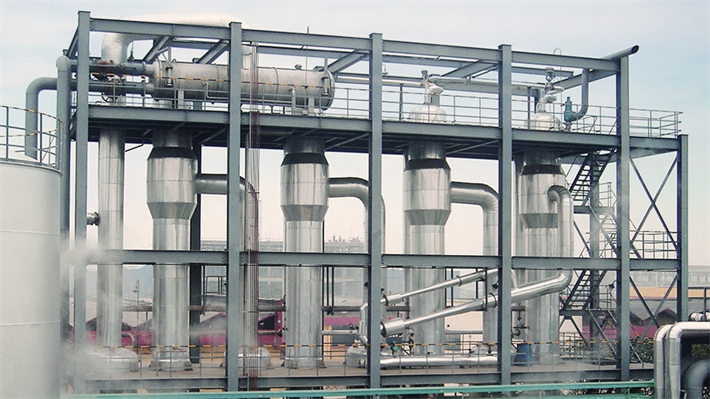
Multiple Effect Evaporation System
With the faster-growing world, another innovative application, the multiple effect evaporation system, is gradually becoming an eye-catcher in industrial areas. Many innovative & highly advanced application units have been developed in the last few years that specifically meet the mechanical standards. Two oil desalination units that are super-efficient and effective in operating every industry's customized needs are: Multi-effect evaporators and Reverse osmosis units.
If you're looking for any such creative application units that can ease your business operations, maximize trading outcomes, and improve working efficiency, this post is a perfect section for you. You will get a brief and comprehensive knowledge about the multi-effect evaporators that are well used for seawater or brines.
Various industries are making tremendous use of multi-effect evaporators for transforming the wasted & contaminated water into distilled one. It focuses and reduces the quantity of water that is abstracted in the oil field during the series of steps. This application unit is affordable and uses many effects when waste heat is present. Such a unit is also considerably more effective compared to water purification systems because of the unexpected complete dissolved solids. However, the unit is quite expensive as compared to water purifiers for standard seawater desalination.
Various sources like gas turbine exhaust, waste heat from engines, etc. that result in cost-consuming energy options. The most effective & featured Crude Oil Heaters work parallel with gas turbine units to run the multi-effect evaporators.
The above post briefs up in detail about one of the effectively featured and top-rated Multiple Effect Evaporation systems. We hope we come up with the right source of knowledge for you through this post. Also, we believe that you will make the best use of this data to enhance your understanding. You can also check out the webpage Sep-Pro Systems for more details. We specialize in offering the customized manufacturing and design of various oil desalination units. Our modular skid-mounted oil and gas applications result in saving a great amount of energy, improving working efficiency, and eventually boosting business productivity.
If you're looking for any such creative application units that can ease your business operations, maximize trading outcomes, and improve working efficiency, this post is a perfect section for you. You will get a brief and comprehensive knowledge about the multi-effect evaporators that are well used for seawater or brines.
Multi-Effect Evaporators:
Various industries are making tremendous use of multi-effect evaporators for transforming the wasted & contaminated water into distilled one. It focuses and reduces the quantity of water that is abstracted in the oil field during the series of steps. This application unit is affordable and uses many effects when waste heat is present. Such a unit is also considerably more effective compared to water purification systems because of the unexpected complete dissolved solids. However, the unit is quite expensive as compared to water purifiers for standard seawater desalination.
Various sources like gas turbine exhaust, waste heat from engines, etc. that result in cost-consuming energy options. The most effective & featured Crude Oil Heaters work parallel with gas turbine units to run the multi-effect evaporators.
Advantages Of Oil Desalination Units:
- The high rated and efficient oil desalination units like multi-effect evaporators, reverse osmosis, gas turbine power generation systems, etc., eases salt's final production from evaporation focus.
- Such fast resulting equipment is responsible for boosting the business profits, promoting the operational performance, and at last results in saving the most energy.
- The working procedures of such splendid desalination units of oil are easy, quick, and effective. One would not feel burdened or hassle-some with the usage of these dependable application units.
- Above all, the designing and manufacturing of such equipment is highly customized and meets all the industrial & mechanical standards on a great note.
Wrapping Up!
The above post briefs up in detail about one of the effectively featured and top-rated Multiple Effect Evaporation systems. We hope we come up with the right source of knowledge for you through this post. Also, we believe that you will make the best use of this data to enhance your understanding. You can also check out the webpage Sep-Pro Systems for more details. We specialize in offering the customized manufacturing and design of various oil desalination units. Our modular skid-mounted oil and gas applications result in saving a great amount of energy, improving working efficiency, and eventually boosting business productivity.
0
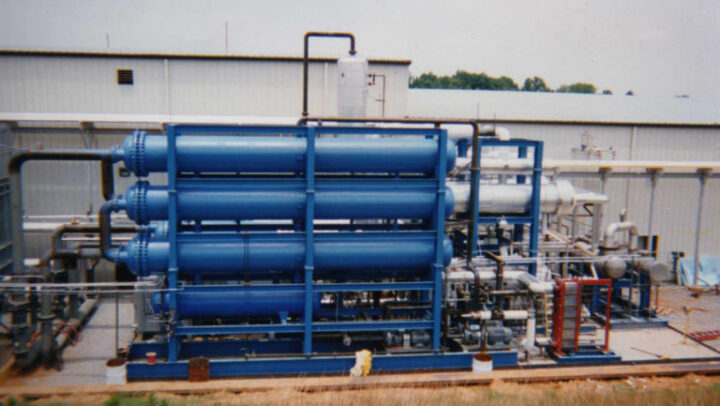
Ammonia-Water Refrigeration
Those who are new to this concept would be surprised to know that this is one of the oldest forms of refrigeration. Though it is old, industries don’t see Ammonia-water refrigeration as an outdated method; it is being used extensively.
Most average consumers don’t know that all that the food and drinks we consume are kept under ammonia refrigeration technology. Now that explains how reliable and effective this technology is. There’s not a thing to worry about or be skeptical about it.
Ammonia-Water Refrigeration: The Definition
The definition is pretty simple. As the name suggests, it’s a refrigeration system that uses ammonia. For those who don’t know, ammonia is a chemical used to absorb heat from one surface and transfer it to the other. On the other hand, Concentrated ammonia is much colder and a better option to keep things cold for a longer period.
The refrigerators that we have in our homes use chemicals like CFCs and Freon. Both chemicals are proven to be pretty destructive for our environment and don’t come in cheap.
Ammonia-water refrigeration is quite an old concept that goes back to 1850s France. Later, the system was brought to the United States in 1860. With time things changed, and by the 1900s, ammonia-powered refrigerators got a green flag for commercial usage. The system was especially used to create ice blocks, keep food and beverage cold, and chemical production.
Later the chemical started being a crucial element in air conditioner solutions for both industrial and household settings. Though it was used globally back then, ammonia is no longer being used these days. However, it is still under operation in many industries as an ultimate cooling solution.
Some Hazards to Keep In Mind
You got to have proper safety equipment while using ammonia-powered refrigerators since that stuff is pretty cold. If you get exposed to it as little as 300 parts per million in the air, you are most likely to end up with disastrous health issues. Ammonia is a highly corrosive chemical that can leave long-term problems on the skin and eye.
Benefits of Ammonia-Water Refrigeration
It works exactly like every other vapor-compression refrigeration system. The only difference is the presence of ammonia, as it helps to remove the heat from the area and transfers it to others. Consider investing in acid gas removal solutions for better results.
With proper safety measures, you can expect things to run butter-smooth. These refrigeration units offer so many advantages compared to those that are powered with CFC and HFC. Here’s a list of some benefits that are worth checking out.
Pocket friendly
There’s much less need for piping – making it less expensive to make. You can expect to pay 10-20% less for ammonia-powered refrigeration solutions.
Ozone friendly
Unlike HFCs and CFCs responsible for ozone depletion, ammonia is not harmful to the ozone layer.
Energy efficient
Compared to CFCs, ammonia refrigerators consume much less energy – resulting in lower electricity bills.
Cheaper Chemical
Ammonia is less expensive than chemicals like CFCs, which explains the reason why industries prefer using Ammonia-water refrigeration.
In the End
If you feel like you’ve learned something of value from this post, do let us know by leaving a comment down below. And if you are looking forward to purchasing ammonia-powered refrigerators and acid gas removal solutions, make sure to check us out at Sep-Pro Systems.
Most average consumers don’t know that all that the food and drinks we consume are kept under ammonia refrigeration technology. Now that explains how reliable and effective this technology is. There’s not a thing to worry about or be skeptical about it.
Ammonia-Water Refrigeration: The Definition
The definition is pretty simple. As the name suggests, it’s a refrigeration system that uses ammonia. For those who don’t know, ammonia is a chemical used to absorb heat from one surface and transfer it to the other. On the other hand, Concentrated ammonia is much colder and a better option to keep things cold for a longer period.
The refrigerators that we have in our homes use chemicals like CFCs and Freon. Both chemicals are proven to be pretty destructive for our environment and don’t come in cheap.
Ammonia-water refrigeration is quite an old concept that goes back to 1850s France. Later, the system was brought to the United States in 1860. With time things changed, and by the 1900s, ammonia-powered refrigerators got a green flag for commercial usage. The system was especially used to create ice blocks, keep food and beverage cold, and chemical production.
Later the chemical started being a crucial element in air conditioner solutions for both industrial and household settings. Though it was used globally back then, ammonia is no longer being used these days. However, it is still under operation in many industries as an ultimate cooling solution.
Some Hazards to Keep In Mind
You got to have proper safety equipment while using ammonia-powered refrigerators since that stuff is pretty cold. If you get exposed to it as little as 300 parts per million in the air, you are most likely to end up with disastrous health issues. Ammonia is a highly corrosive chemical that can leave long-term problems on the skin and eye.
Benefits of Ammonia-Water Refrigeration
It works exactly like every other vapor-compression refrigeration system. The only difference is the presence of ammonia, as it helps to remove the heat from the area and transfers it to others. Consider investing in acid gas removal solutions for better results.
With proper safety measures, you can expect things to run butter-smooth. These refrigeration units offer so many advantages compared to those that are powered with CFC and HFC. Here’s a list of some benefits that are worth checking out.
Pocket friendly
There’s much less need for piping – making it less expensive to make. You can expect to pay 10-20% less for ammonia-powered refrigeration solutions.
Ozone friendly
Unlike HFCs and CFCs responsible for ozone depletion, ammonia is not harmful to the ozone layer.
Energy efficient
Compared to CFCs, ammonia refrigerators consume much less energy – resulting in lower electricity bills.
Cheaper Chemical
Ammonia is less expensive than chemicals like CFCs, which explains the reason why industries prefer using Ammonia-water refrigeration.
In the End
If you feel like you’ve learned something of value from this post, do let us know by leaving a comment down below. And if you are looking forward to purchasing ammonia-powered refrigerators and acid gas removal solutions, make sure to check us out at Sep-Pro Systems.
0
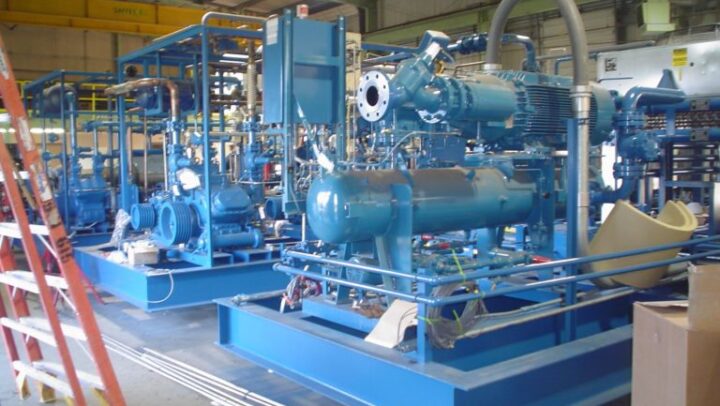
Refrigeration: Understanding The Refrigeration Evaporators And Their Importance!
In any industrial market, various components and equipment play an essential role in making different tasks easy. One of them is wastewater evaporation techniques, and it is one of the easiest & most significant ways to reduce wastewater reduction. Some evaporations technologies help in recovering valuable water and their separation from hazardous material.
Evaporation is considered as another way of treatment of wastewater. It can help eliminate heavy metals, salts, and various other components with its best solutions. We should always prioritize water conservation; therefore, our equipment efficiently produces high-quality and reusable distillate. Most technology such as refrigeration evaporators applications also makes a high-quality, reusable distillate-a significant feature where water conservation is a priority.
Wastewater Evaporation Applications
Reducing groundwater water levels and drainage associated fees to wastewater treatment denial would greatly help industrial wastewater filtration plants. The Enhanced Evaporation wastewater evaporators run at the lowest kilowatt per gallon of evaporated water, bringing savings back to the treatment facility, from industrial process water to food processing or agriculture.
Industrial Refrigeration Basics
Modern refrigeration measures are utilized in significant industries, from assembling and innovation to food and chemicals. Additionally, industrial refrigeration is a substantial piece of any cycle where low temperatures should be kept up for cold stockpiling. Simultaneously, process chillers have a significant impact on mechanical cooling.
Before plunging into the particulars, it is a great idea to comprehend fundamental refrigeration measures. These incorporate the refrigeration cycle interaction and how it transports heat energy starting with one spot then onto the next. Another thing to understand is the vital parts of all refrigeration frameworks.
By its basic definition, refrigeration is the way toward eliminating heat from a material, substance, or space. With mechanical cycles, measure chillers are utilized to stop heat from a particular interaction or material. The chillers use a refrigeration circuit utilizing either a fume pressure or assimilation framework to cool or dehumidify the air.
There are four critical parts in any refrigeration framework:
During the refrigeration circuit, the refrigerant goes through a blower. The blower is the core of any framework and is usually controlled by an electric engine. This interaction hoists the critical factor of the refrigerant.
From the blower, the refrigerant moves through a condenser. In the condenser, it changes from fume structure to fluid-structure and oozes heat. For air-cooled measure chillers, the fume is at a higher temperature than the air passing across the condenser.
After the refrigerant goes through the condenser, it travels through the development valve (also referred to as a metering tool) and drops in the critical factor.
The last step? The refrigerant moves to the evaporator, drawing heat and making it disintegrate. The evaporator jerks heat from the territory that should be cooled. At that point, the refrigerant moves back to the blower, and the cycle begins once more.
There are other equipments used with industrial refrigerator process, and These may include:
Wastewater Evaporator Technologies
Heating source, circulation system, and heat exchanger systems describe evaporators. Hot water, steam, heat fluids, flue gases, and electrical power will provide the heating source for evaporation-either directly by resistance or indirectly through a heat pump or mechanical vapor recompression. There are various types of waste water evaporation techniques; some of them are as follows:
Atmospheric Evaporation
This is one of the most comfortable designs of evaporation. Direct heat is applied at atmospheric pressure like steam or combustion to boil the water in this process.
Heat Pump Vacuum Evaporation
The warmth siphon vacuum evaporator offers decreased electrical energy utilization and better dependability for low than medium stream delivered water treatment applications. The more significant part of the energy as dormant warmth is reused for new fume creation. Electrical energy utilization essentially relies upon the work needed to pack the moderate liquid, and to a small degree, fans to help the air-cooling measure.
Mechanical Vapor Recompression (MVR)
The reduced energy consumption of MVR evaporators makes it possible to treat medium to high flow wastewater treatment applications where there is no excess or waste of hot water/steam and cooling water.
Choose the right wastewater evaporation techniques.
Sep-Pro Systems is a moderate-sized organization devoted to meeting our clients' particular requirements in the planning, designing, and manufacturing of oil and gas preparing gear. Situated in new and extended offices in Houston, we offer our domestic and overseas customers the adaptability to meet their specific interaction framework needs inside their mentioned plans while emphasizing customized client care and backing. Whether it is refrigeration evaporators or vapor recovery systems, we have various other plant systems. Call us today and meet your industrial needs with the latest and modern equipment.
Evaporation is considered as another way of treatment of wastewater. It can help eliminate heavy metals, salts, and various other components with its best solutions. We should always prioritize water conservation; therefore, our equipment efficiently produces high-quality and reusable distillate. Most technology such as refrigeration evaporators applications also makes a high-quality, reusable distillate-a significant feature where water conservation is a priority.
Wastewater Evaporation Applications
Reducing groundwater water levels and drainage associated fees to wastewater treatment denial would greatly help industrial wastewater filtration plants. The Enhanced Evaporation wastewater evaporators run at the lowest kilowatt per gallon of evaporated water, bringing savings back to the treatment facility, from industrial process water to food processing or agriculture.
Industrial Refrigeration Basics
Modern refrigeration measures are utilized in significant industries, from assembling and innovation to food and chemicals. Additionally, industrial refrigeration is a substantial piece of any cycle where low temperatures should be kept up for cold stockpiling. Simultaneously, process chillers have a significant impact on mechanical cooling.
Before plunging into the particulars, it is a great idea to comprehend fundamental refrigeration measures. These incorporate the refrigeration cycle interaction and how it transports heat energy starting with one spot then onto the next. Another thing to understand is the vital parts of all refrigeration frameworks.
By its basic definition, refrigeration is the way toward eliminating heat from a material, substance, or space. With mechanical cycles, measure chillers are utilized to stop heat from a particular interaction or material. The chillers use a refrigeration circuit utilizing either a fume pressure or assimilation framework to cool or dehumidify the air.
There are four critical parts in any refrigeration framework:
- Evaporators
- Compressor.
- Condenser.
- Expansion valve.
During the refrigeration circuit, the refrigerant goes through a blower. The blower is the core of any framework and is usually controlled by an electric engine. This interaction hoists the critical factor of the refrigerant.
From the blower, the refrigerant moves through a condenser. In the condenser, it changes from fume structure to fluid-structure and oozes heat. For air-cooled measure chillers, the fume is at a higher temperature than the air passing across the condenser.
After the refrigerant goes through the condenser, it travels through the development valve (also referred to as a metering tool) and drops in the critical factor.
The last step? The refrigerant moves to the evaporator, drawing heat and making it disintegrate. The evaporator jerks heat from the territory that should be cooled. At that point, the refrigerant moves back to the blower, and the cycle begins once more.
There are other equipments used with industrial refrigerator process, and These may include:
- Liquid receiver: These are units situated close to the condensers that get and store the refrigerant charge.
- SuctionTrap: The pull trap keeps fluid refrigerant from entering the blower. It generally is situated close to the evaporator and blower.
- Low Pressing factor Receiver: The humble pressing factor recipient helps separate fluid from fume, essentially utilized in fluid overload frameworks.
Wastewater Evaporator Technologies
Heating source, circulation system, and heat exchanger systems describe evaporators. Hot water, steam, heat fluids, flue gases, and electrical power will provide the heating source for evaporation-either directly by resistance or indirectly through a heat pump or mechanical vapor recompression. There are various types of waste water evaporation techniques; some of them are as follows:
Atmospheric Evaporation
This is one of the most comfortable designs of evaporation. Direct heat is applied at atmospheric pressure like steam or combustion to boil the water in this process.
Heat Pump Vacuum Evaporation
The warmth siphon vacuum evaporator offers decreased electrical energy utilization and better dependability for low than medium stream delivered water treatment applications. The more significant part of the energy as dormant warmth is reused for new fume creation. Electrical energy utilization essentially relies upon the work needed to pack the moderate liquid, and to a small degree, fans to help the air-cooling measure.
Mechanical Vapor Recompression (MVR)
The reduced energy consumption of MVR evaporators makes it possible to treat medium to high flow wastewater treatment applications where there is no excess or waste of hot water/steam and cooling water.
Choose the right wastewater evaporation techniques.
Sep-Pro Systems is a moderate-sized organization devoted to meeting our clients' particular requirements in the planning, designing, and manufacturing of oil and gas preparing gear. Situated in new and extended offices in Houston, we offer our domestic and overseas customers the adaptability to meet their specific interaction framework needs inside their mentioned plans while emphasizing customized client care and backing. Whether it is refrigeration evaporators or vapor recovery systems, we have various other plant systems. Call us today and meet your industrial needs with the latest and modern equipment.
0
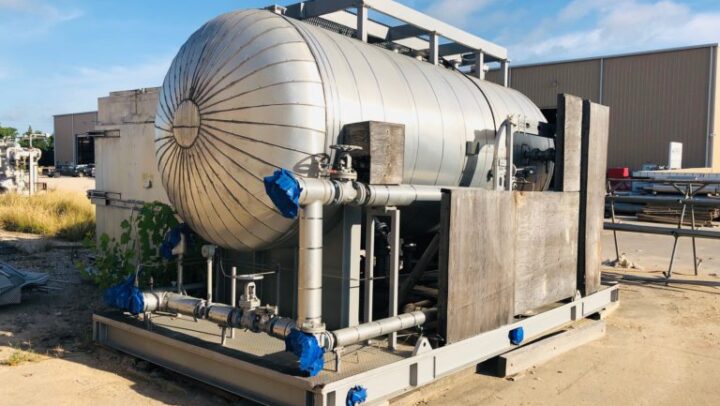
Biomass Processing: A Major Breakthrough You Should Lookout For
Biomass, for those who don't know, is an organic material directly from animals and plants. You'd be surprised to know that back in the 1800s, it was said to be the most crucial element for the U.S.A energy consumption. Though times have changed, biomass continues to be a major part of energy in many countries worldwide. It is being used extensively for cooking and heating, mostly in developing countries.
Biomass processing has made itself a crucial aspect in developed countries as it is being used for transportation and electricity generation. Now, you must be thinking, "what makes it an exceptional source of energy?" Well, the answer to that question is pretty simple and straightforward. You see, biomass acts like storage that contains chemical energy from the sun. Having such property in its arsenal makes it quite versatile, which is why it can be burned directly for heat or converted into gaseous fuels through a handful of processes.
Thermal conversion
This process involves heating the biomass to stabilize and dehydrate it. Feedstocks like lumber mills and paper scrap are often used in this process. Different types of energy are created from different methods.
Here are some biomass processing techniques you should know about:
- Pyrolysis
This is a heating biomass method at temperatures as high as 200 to 300 degrees Celsius and that too without oxygen. The motive is to keep it from combusting. The process produces a dark liquid called pyrolysis oil, syngas, and biochar. All three of these components can be used to produce energy.
Pyrolisis oil is related to tar, which can be combusted to create electricity.
Syngas is mostly converted into methane and a replacement for natural gas.
As the name suggests, Biochar is charcoal used in the agricultural industry. It helps to enrich the soil, acting as a repellent against pests.
- Direct firing
As the name suggests, it involves the burning of charcoal directly; the steam produced in this process is used to power up turbines, which helps in electricity production.
Speaking of energy, Naphtha Reformer is being used quite extensively to produce high-octane gasoline.
Biomass is often co-burned with fossil fuel. This process is pretty substantial as it eases the need for more coal, reducing the carbon footprint and other greenhouse gases.
- Gasification
Gasification is the only process through which biomass can be converted into energy directly. In this process, the biomass is heated at 700 degrees Celsius with a limited amount of oxygen. The heat leads to the breakdown of molecules, producing slag and Syngas.
Syngas is a combination of carbon monoxide and hydrogen for those who don't know, which later gets cleaned off from sulfur, mercury, and other pollutants during gasification.
- Anaerobic decomposition
Anaerobic Decomposition is one of the most important and complex aspects of landfills and biomass processing. In this process, instead of oxygen, bacteria do the job of breaking down materials. It is where biomass is crushed and compressed, producing an anaerobic environment.
In this environment, the decaying process begins, which leads to the production of methane, a valuable energy source. It is expected that methane will replace fossil fuels in the coming times.
In the End
Being one of the most crucial aspects of energy production, biomass processing has made itself a topic. With such importance latched to it, companies like Sep-Pro Systems are doing their best to offer the world best-in-class and cost-effective solutions that provide nothing but accuracy and reliability.
We hope this article helped you understand the basic aspect of biomass. If you feel like you've learned something of value, do let us know.
Biomass processing has made itself a crucial aspect in developed countries as it is being used for transportation and electricity generation. Now, you must be thinking, "what makes it an exceptional source of energy?" Well, the answer to that question is pretty simple and straightforward. You see, biomass acts like storage that contains chemical energy from the sun. Having such property in its arsenal makes it quite versatile, which is why it can be burned directly for heat or converted into gaseous fuels through a handful of processes.
Thermal conversion
This process involves heating the biomass to stabilize and dehydrate it. Feedstocks like lumber mills and paper scrap are often used in this process. Different types of energy are created from different methods.
Here are some biomass processing techniques you should know about:
- Pyrolysis
This is a heating biomass method at temperatures as high as 200 to 300 degrees Celsius and that too without oxygen. The motive is to keep it from combusting. The process produces a dark liquid called pyrolysis oil, syngas, and biochar. All three of these components can be used to produce energy.
Pyrolisis oil is related to tar, which can be combusted to create electricity.
Syngas is mostly converted into methane and a replacement for natural gas.
As the name suggests, Biochar is charcoal used in the agricultural industry. It helps to enrich the soil, acting as a repellent against pests.
- Direct firing
As the name suggests, it involves the burning of charcoal directly; the steam produced in this process is used to power up turbines, which helps in electricity production.
Speaking of energy, Naphtha Reformer is being used quite extensively to produce high-octane gasoline.
Biomass is often co-burned with fossil fuel. This process is pretty substantial as it eases the need for more coal, reducing the carbon footprint and other greenhouse gases.
- Gasification
Gasification is the only process through which biomass can be converted into energy directly. In this process, the biomass is heated at 700 degrees Celsius with a limited amount of oxygen. The heat leads to the breakdown of molecules, producing slag and Syngas.
Syngas is a combination of carbon monoxide and hydrogen for those who don't know, which later gets cleaned off from sulfur, mercury, and other pollutants during gasification.
- Anaerobic decomposition
Anaerobic Decomposition is one of the most important and complex aspects of landfills and biomass processing. In this process, instead of oxygen, bacteria do the job of breaking down materials. It is where biomass is crushed and compressed, producing an anaerobic environment.
In this environment, the decaying process begins, which leads to the production of methane, a valuable energy source. It is expected that methane will replace fossil fuels in the coming times.
In the End
Being one of the most crucial aspects of energy production, biomass processing has made itself a topic. With such importance latched to it, companies like Sep-Pro Systems are doing their best to offer the world best-in-class and cost-effective solutions that provide nothing but accuracy and reliability.
We hope this article helped you understand the basic aspect of biomass. If you feel like you've learned something of value, do let us know.
0
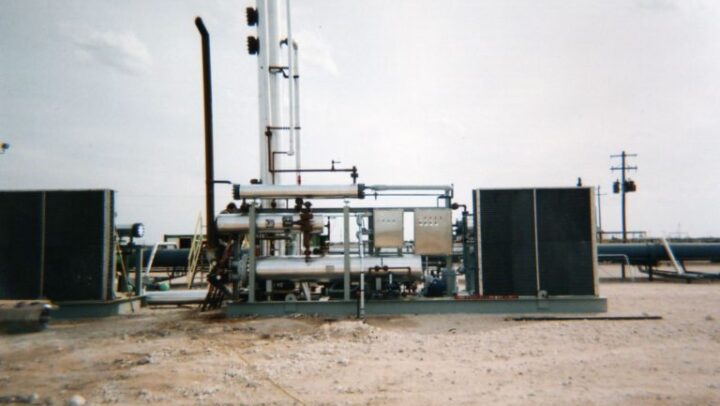
How To Do CO2 Removal From Natural Gas Using Membrane Based Systems?
CO2 is contained in natural gas and has to be separated to satisfy requirements to supply the gas to the pipeline in certain areas. It is extremely beneficial to have a simple process technology available to be deployed in rural, unattended, or offshore situations. In addition to competitive capital and operational costs, ease of operation, rapid start-up, and high on-stream variables are needed. Don't worry; we are here to help you with CO2 removal from natural gas methods.
Membrane gas treatment systems offer a safe and effective alternative for removing water vapor and carbon dioxide from natural gas, especially in remote areas. Membrane structures are highly adaptable to the requirements of varying gas quantities, CO2 concentrations, and/or product-gas.
Membrane-based systems from MTR give a simple, affordable, lightweight approach to lessen the CO2 content of natural gas. These novel membranes' unique polymer chemistry is better than conventional membranes in evading natural gas's diverse components. The membranes require the least gas pretreatment and create a very definite separation response, with higher than 95% hydrocarbon recovery.
Advantage of using Membrane For Carbon Dioxide:
- Reduction Membranes (CO2):
- Versatility Availability
- Customizability
- Pleasant with the world
- Quick to run
Use of Membrane Separation for CO2 removal from natural gas:
- Pressures over 450 PSIG running
- Presence of Electricity
- Restraints on room and weight
Process of CO2 Removal:
Carbon dioxide membranes run on the principle of selective permeation. Each gas element has a particular permeation rate. The movement of permeation is defined by the rate at which a component dissolves into the membrane surface and the rate at which it spreads through the membrane.
Components with more eminent diffusion rates (such as CO2, H2, and H2S) filter quicker than components with lower diffusion rates by the membrane module including N2, C1, C2, and more complex hydrocarbons. For example, carbon dioxide is a "fast" gas that is more porous than methane. The carbon dioxide will penetrate through the fiber as a stream composed of these two gases touches the membrane. We also manufacturers the devices for the Absorption refrigeration process.
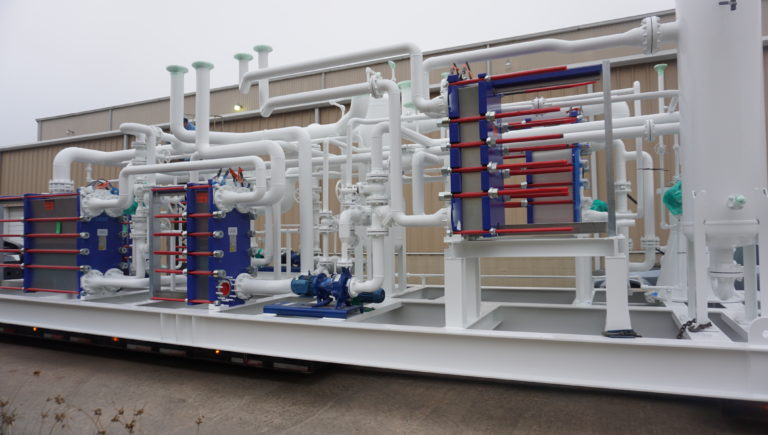
These membranes are employed to provide pipeline CO2 specifications of 4 mol percent or more limited or bulk CO2 elimination. Using the membrane method of MTR minimizes needed deck space and weight in offshore installations due to these membranes' high fluxes and effective module packing.
Benefits:
- Restricted pretreatment due to the robust chemistry of the membrane
- Special concept of a process to optimize complete recovery of hydrocarbons
- Decreased CO2 content to the appropriate requirements (<2 mol percent or optimal levels)
- The robust, proven efficiency of the membrane at high CO2 levels
- No periodic repairs, no moving parts, planned for remote unmanned service.
- High-efficiency packaging decreases weight and space, making the units suitable for offshore applications.
- Easy installs that are low-cost. In certain cases, the construction of single skid systems will take hours.
- Elevated on-stream periods maximize sales.
Endings!
Sep-Pro Systems are the best contractor and creator for CO2 removal from natural gas. Contact us for any such help as we create corresponding dehydration units.
0
